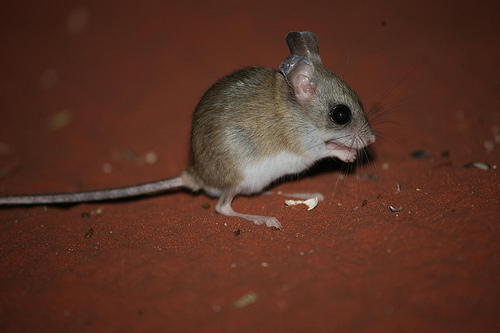
In Chapter 10 we look at physiological adaptations, including the ways that animals have adapted to survive in arid environments. The Spinifex hopping mouse (above) has structural, functional and behavioural adaptations that make it well-suited to living in the desert. Look at it’s body shape (although it is a very small marsupial, it is almost spherical, which reduces it’s SA:V ratio and therefore reduces water loss by evaporation) and large eyes (enable it to see in dim light – feeding and escape from predators in low-light conditions). They are examples of structural adaptations. What are the functional (physiological) and behavioural adaptations of this marsupial?
Activity 10.3 also looks at the camel, euro, red kangaroo and budgerigar as vertebrates which are adapted to hot and dry climates. Zoos Victoria has produced some excellent worksheets about animal adaptations here.
This article has some examples from the northern hemisphere, including the desert wolf, oryx, eland and gazelles.
Draw up a table of three columns and list all the structural, functional and behavioural adaptations that vertebrates living in arid environments have in common.